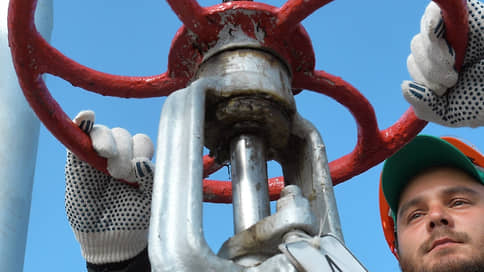Oil was cleared of drawdowns – Newspaper Kommersant No. 184 (7385) dated 10/05/2022
[ad_1]

According to Kommersant, Russia in September restored oil production, which fell in August for the first time since spring. Despite the seasonal slowdown in demand in the domestic market and the drop in wholesale prices for gasoline, oil refining in the country almost did not decrease compared to August. According to the results of three quarters, oil production in the Russian Federation amounted to about 400 million tons, having increased by 3% year-on-year. Experts expect that by the end of the year, production in the Russian Federation may decrease by no more than 1%.
Oil and gas condensate production in Russia in September returned to the level of July after a small drawdown in August. So, according to Kommersant sources familiar with the situation, in September the average daily oil production in Russia increased by 1% compared to August, to almost 1.47 million tons. From April until August, Russia continuously increased production, which decreased in the spring due to problems with exports after the introduction of Western sanctions against the Russian Federation for the outbreak of hostilities in Ukraine. In general, over the three quarters of 2022, oil production in Russia grew by 3% year-on-year, to about 400 million tons.
The main reasons for the decrease in production in August were the reduction in condensate production due to a decrease in gas production by Gazprom, as well as the cessation of production at the Prirazlomnoye field of Gazprom Neft due to repairs (see Kommersant dated August 30).
Under the conditions of Western sanctions and risks of reputational losses, since the end of February, European buyers began to refuse tanker supplies of Russian raw materials, as a result, Russian oil companies began to reorient them to the east. In addition, oil companies sought to increase the load on their refineries, and the attractiveness of fuel supplies to the domestic market was ensured by the payment of damper subsidies.
In September, despite the traditional decline in demand for fuel in autumn, as well as sharply reduced payments for the damper for gasoline, the volume of primary processing in Russia almost did not decrease compared to August, amounting to about 760 thousand tons per day. In order to maintain volumes, oil companies had to sacrifice prices – the cost of gasoline in the wholesale sector in September fell by 20%, falling to the lows of March-April.
Export of oil from Russia by sea and oil pipelines in September remained practically the same as in August – about 672 thousand tons per day. At the same time, according to Kommersant, there are signs of growth in oil exports by rail, mainly to China. Against the backdrop of future EU sanctions, shipping oil by sea from the Baltic ports is becoming increasingly unprofitable due to increased freight costs, and oil companies are beginning to look for other export options (see also Kommersant of October 4).
Now production in the Russian Federation, together with condensate, is at the level of 10.7 million barrels per day, excluding condensate – about 10 million barrels per day. Thus, the production level is about 1 million barrels per day less than the current Russian quota under the OPEC+ deal. OPEC+ is expected to agree this week on an additional 1 million bpd cut in production, which could cut Russia’s quota by 300,000 bpd. Thus, Russia will not need to reduce actual production, while the OPEC + decision may support oil prices, which fell below $90 per barrel in September.
OPEC+ countries plan to decide on October 5 on the level of quotas in November. According to Bloomberg, scenarios are being considered for reducing quotas by 1 million barrels per day, 1.5 million and 2 million. The problem, however, is that in August the OPEC + countries were collectively behind the quota by 3.5 million barrels per day. . Thus, the reduction in the quota may have a rather limited effect on the cartel’s overall oil supply.
Production dynamics in 2022 are influenced by two factors — the effect of the low base in 2021, the refusal of companies from the EU and Japan from oil from the Russian Federation and potential sanctions, said Sergei Kondratyev, deputy head of the economic department at the Institute of Energy and Finance. He recalls that in the first eight months of 2022, oil production declined year-on-year only in April and May, returning to growth since June (plus 1.8% year-on-year in August). The increase in production in recent months is associated with continued high demand in Asia, an increase in shipments in the Mediterranean and an increase in processing at Russian refineries, the expert believes. The dynamics of production in the coming months will depend on how the EU sanctions on the supply of Russian oil will work from December. According to Mr. Kondratiev, in 2022, oil production in Russia will amount to 520-522 million tons, having slightly decreased by 2021 (524.6 million tons).
[ad_2]
Source link





